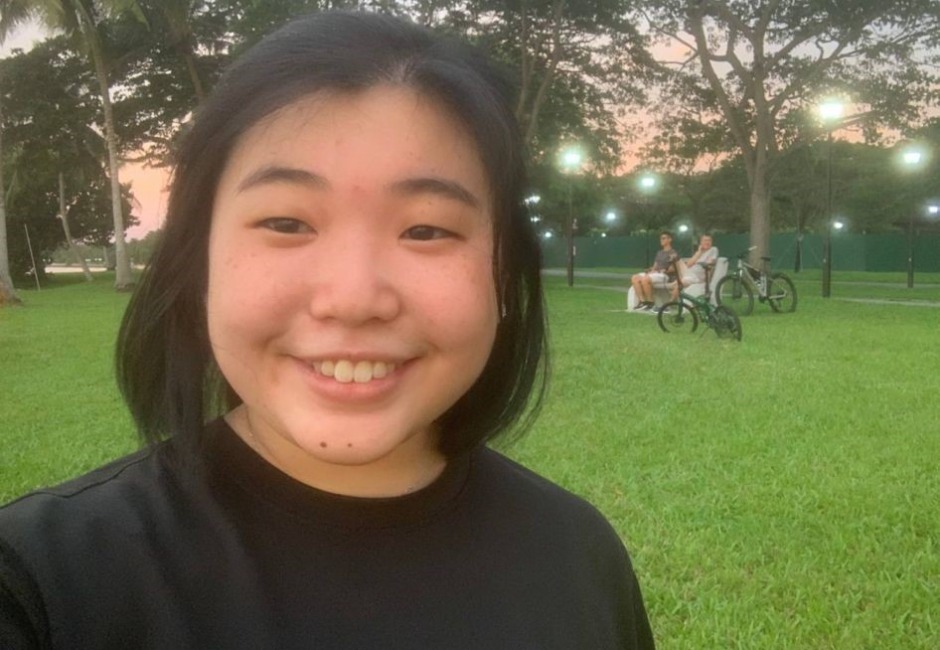Aiming High in Maths with Towers and Kites
07 Jun 2011
At Balestier Hill Secondary School, nobody takes offence when told to “go fly a kite”. In fact, the remark would quite likely prompt the schoolmate you just addressed to happily scurry off to… well… fly a kite!
Far from insulting each other’s intelligence, the statement stems from one highlight of the school’s Math Week, which saw students building tetrahedral kites out of drinking straws. Held every March, Math Week is a carnival that offers a host of fun activities designed to ignite an interest in Maths by showing how Mathematical concepts apply to real life objects.
Success to the last straw
Houses of straw would be a bad idea if you live near a big bad wolf, but such structures have become an integral feature of Math Week since the carnival was launched in 2009. Overcoming their initial scepticism, the students have since made straw assemblies a trademark of the school, as they applied the principles of number patterns, polygons and tetrahedrons (shapes with four triangular faces) to construct kites that can actually soar with the wind.
To raise the stakes, the teachers set a new task in 2010: build a tetrahedral tower entirely out of straws. Rising to the challenge, the students made a tower comprising 256 cells which demonstrated that the straws, though weak and flimsy on their own, could serve as building blocks for a tall structure.

By tying drinking straws together, students construct single tetrahedron cells that are attached to other cells to create bigger structures.
This year, the students repeated their feat, but on a recording-breaking scale. Pulling out all stops, they made a 4.65 metre tall tower out of 6,144 drinking straws that formed 1,024 tetrahedrons. Designed as a pyramid for maximum stability, the tower earned a spot in the Singapore Book of Records as the tallest sculpture made entirely from drinking straws.
“The tower reached the top of the school foyer,” exclaimed Tay Pai Zheng, a member of the 13-strong building team. Though painstaking, the Sec 3 student found the experience thoroughly enjoyable. “We talked to each other and listened to music, while some of us brought the straws home to continue tying them together,” recounted Pai Zheng, who also helped to explain how the tower was built to guests during the school’s award ceremony in April. “I felt very proud to represent the team.”
Lessons where it counts

The giant straw tower loomed 4.65 metres high and used up 6,144 drinking straws – not counting those that broke in the building process.
According to the school’s Head of Mathematics, Mr Lawrence Koh, Math Week was conceived “to hook them young – as soon as they come into the school.” Mr Koh added that the event started because teachers wanted to make the subject an out-of-classroom experience for Normal (Technical) students and sustain their interest in Maths throughout their secondary school years.
“Maths is fun because we get to go around the school during lesson time to take pictures for our worksheets,” quipped Ken Ong. Describing a competitive exercise in symmetry and tessellation (the making of mosaic patterns on a planar surface), the Secondary 3 student related how his class worked in groups to take photographs of objects that illustrate the relevant Maths concepts. A prize awaited the winning team, so it was all hands on deck as the students scoured the compound for suitable shapes and silhouettes.
“Maths challenges the brain and helps us to think more clearly,” stated Ken’s classmate Carin Ho. “When I go shopping, I do mental calculations to check my spending.”
Mr Koh explained that the school’s Maths department uses a differentiated approach to teaching the subject as the students “are individuals who learn in different ways.” For instance, N(T) students usually respond better to kinaesthetic (or hands-on) learning in which they can make meaningful connections between abstract concepts and tangible objects. Hence, N(T) Maths classes involve a fair amount of practical, object-oriented tasks.
Mrs Low Pei Ling, a Sec 2 Maths teacher, explained that she would first introduce basic concepts such as congruency and similarity. Then, she would set aside one period for an out-of-classroom activity where students search for forms that represent the concepts. By examining drawings they made of these objects, Mrs Low is able to gather “useful feedback on their level of understanding” of the topic.
Playing the numbers game
From aiming high to going far, Maths sessions also bring the students on outdoor expeditions modelled after the TV series “The Amazing Race”. Held in Term 3 for all Sec 2 students, the Math Trail exposes participants to the mathematical features of locations such as the Botanic Gardens, Esplanade, Changi Airport and Merlion Park.

Posing by the record-setting straw tower are (last row) Principal Ms Chamb Cherk Ing (first from right), HoD Math Mr Lawrence Koh (second from right), Level Head Math Miss Joanna Chong (fourth from right), and N(T) Math teachers Mr Sim Zheng Yang (first from left) and Mrs Low Pei Ling (second from left).
Clearly intent on looking beyond the numbers, Balestier Hill Secondary School’s approach to Maths adds to the equation skills as teamwork, relationship building and self-confidence. Miss Joanna Chong, Level Head of Maths, added that the teachers also organise visits to Ngee Ann Polytechnic to help the students “look into the future and chart a path for themselves.”
Next on an already ambitious agenda is gaming. Mr Koh revealed that his department is in the midst of designing a multi-player gaming platform for N(A) and N(T) students. When piloted later this year, the project is expected to hone the habit of “drill and practice”, a vital trait of successful Maths learners. Put it this way, the students will have a valid reason to spend time playing online games – they can rightly claim they are practising their Maths!



.jpg)



